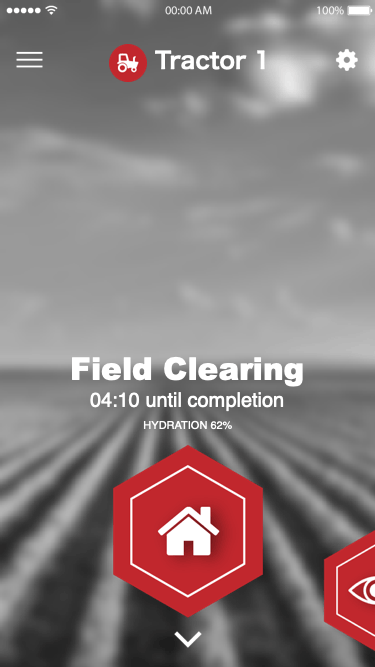Axle
Axle
Bringing farming into the technological revolution
Axle is an interactive application that brings your tractor into the 21st century by allowing you to remotely complete tasks all around your farm while keeping full control of what your tractor is doing and where your tractor is.
Axle allows you to keep track of what your tractor is up to and how long it has until the current task is completed. You can also rearrange tasks in the order you would like them to be completed while also creating new tasks. This tasks system works in a similar way to how a music playlist would work, allowing you to rearrange, pause, stop and skip tasks.
Within Axle you can fully monitor what your tractor is doing. In the monitoring tab, you can access and view point of view cameras places around the tractor. You can also access a birds’ eye view map of the tractors route along with a heat map of the farm.
The goal of Axle is to provide farmers with a way to autonomously decrease physical labour on a farm while also enhancing the efficiency of working on a farm.
THE DESIGN PROCESS
Research
Our user group consisted of full time farmers, people that farm as a hobby and people that want to become famer.
Interviews and surveys were used to gather research on where our autonomous technology would be best applied on farm. Interviews with farmers allowed us to gain an in-depth view of what a farmer does on a daily basis and where autonomy would be most useful.
With qualitative data gathered from interviews with farmers, numbers and statistics on autonomous technologies used on a farm were needed. Our aim was to find out if farmers wanted and/or needed autonomy on a farm. However, it was challenging to get a hold of enough farmers to gather a large amount of data. Eventually we turned to Reddit. Reddit is an online link sharing website that has pages for almost anything, including a page dedicated to farming, so I made a post explaining our project and linked a survey.
With data collected, we then synthesized our data and developed our user needs. Our user needs were: The product must make farming more efficient for the farmer while reducing physical labour. The product must also allow the farmer to have full control over the vehicle when necessary.





